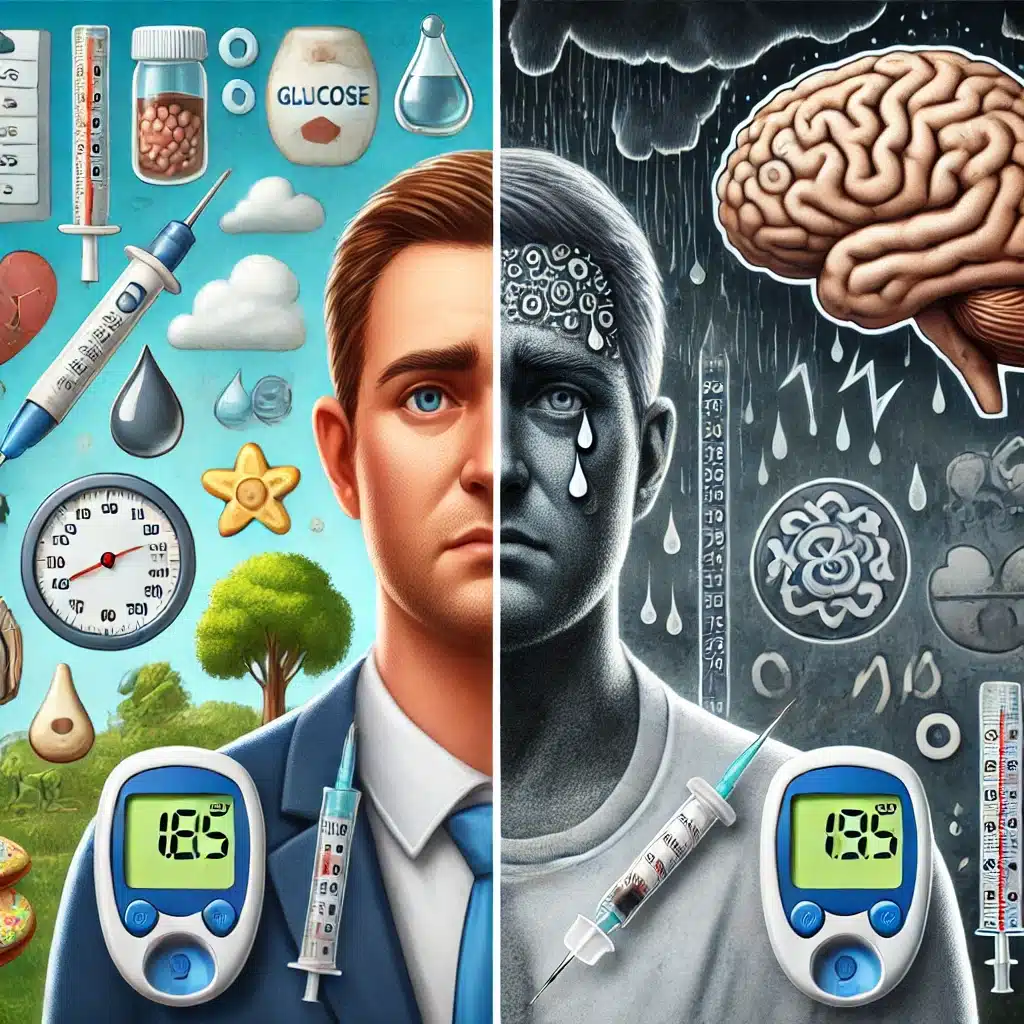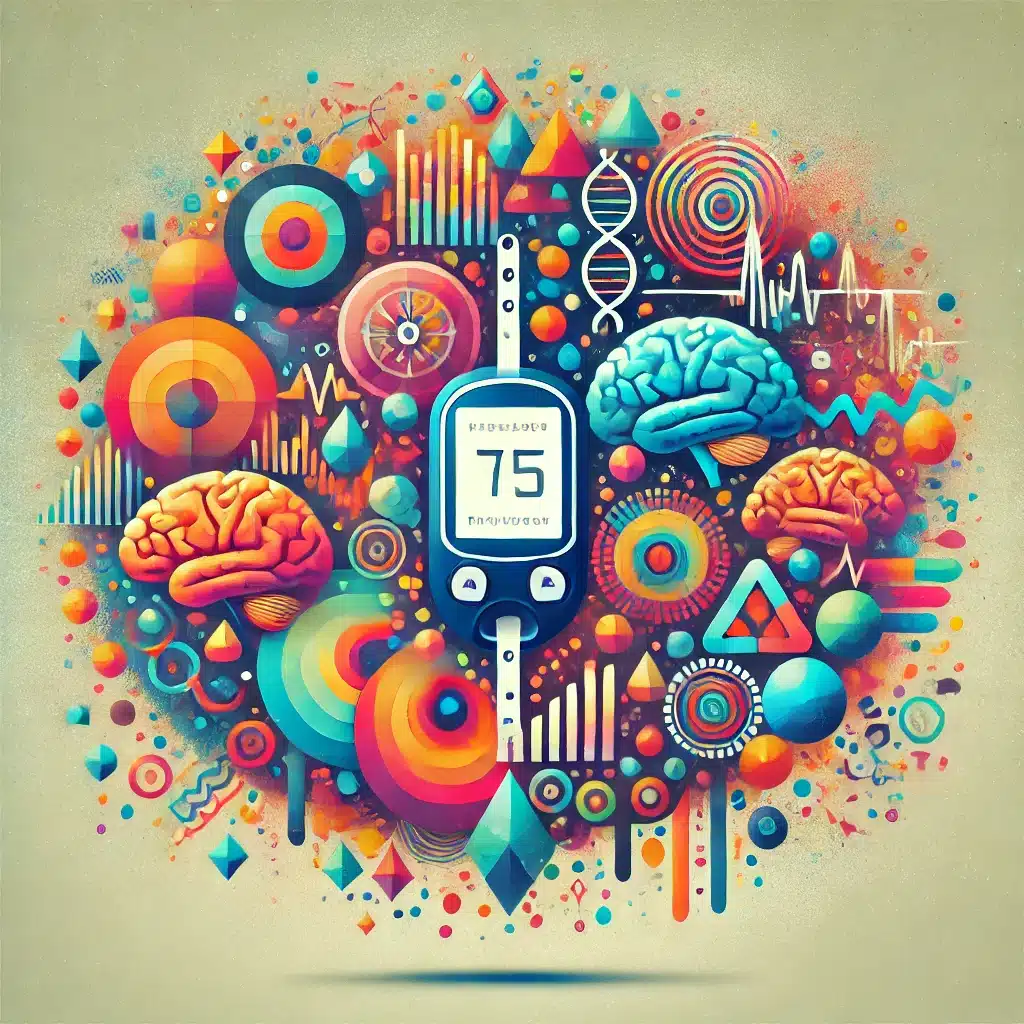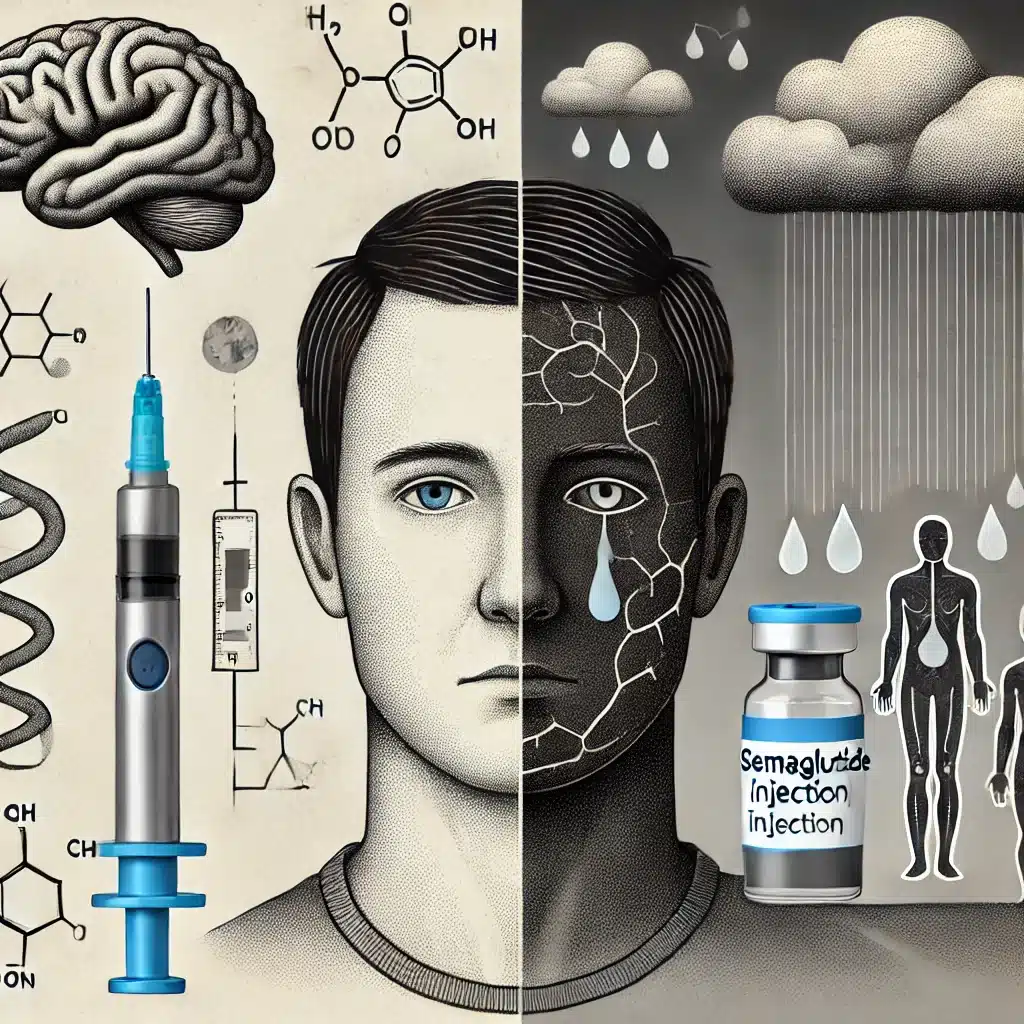GLP-1 receptor agonists like semaglutide, used for managing Type 2 diabetes, may be linked to adverse mood changes, necessitating further investigation into their psychiatric effects.
Highlights:
- GLP-1 Receptor Agonists: These medications mimic GLP-1 hormone effects, enhancing insulin secretion and reducing appetite, commonly used for Type 2 diabetes management.
- Mood Effects: Data on the impact of GLP-1 receptor agonists on mood are inconsistent, with some studies indicating potential anxiety and depressive symptoms.
- Case Report: A 54-year-old woman with Type 2 diabetes and a history of depression experienced irritability, anxiety, and loss of interest in activities after starting semaglutide, which improved after discontinuation.
- Regulatory Review: The European Medicines Agency is reviewing the risk of suicidal thoughts and self-harm with GLP-1 receptor agonists, including semaglutide.
- Clinical Implications: Healthcare providers should monitor patients on GLP-1 receptor agonists for mood changes and consider mental health evaluations if necessary.
Source: Innovations in Clinical Neuroscience (2024)
Links Between GLP-1 Agonists & Mood
Glucagon-like peptide-1 (GLP-1) receptor agonists, such as semaglutide, have revolutionized the management of Type 2 diabetes by mimicking the effects of the GLP-1 hormone.
These medications enhance insulin secretion, reduce glucagon levels, slow gastric emptying, and promote satiety, thereby improving glycemic control and aiding in weight management.
Despite their efficacy in managing diabetes, emerging evidence suggests that GLP-1 receptor agonists may also have notable effects on mood and mental health, which warrants closer examination.
Central Nervous System (CNS)
GLP-1 receptors are present in several brain regions involved in emotional regulation, such as the hypothalamus, brainstem, and amygdala.
Activation of these receptors by GLP-1 agonists can influence neurotransmitter release and neurocircuitry associated with mood and anxiety.
Preclinical Findings
Animal studies have shown that GLP-1 receptor agonists can induce anxiety-like behaviors shortly after treatment initiation, which may transition to positive mood effects with prolonged use.
These findings suggest a complex interaction between GLP-1 signaling and mood regulation mechanisms.
Clinical Observations
Clinical trials and patient reports have indicated mixed outcomes regarding the psychiatric effects of GLP-1 agonists.
Some studies have noted increased reports of anxiety and depressive symptoms, while others have found no significant differences compared to other treatments.
Regulatory Concerns
The European Medicines Agency (EMA) and other regulatory bodies have initiated reviews of the potential psychiatric side effects of GLP-1 receptor agonists, including risks of suicidal thoughts and behaviors.
This underscores the need for heightened vigilance and comprehensive research.
Case Report: Worsening Depression with Semaglutide (Ozempic) in 54-Year-Old Female (2024)

Patient History
A 54-year-old female presented with a complex medical history, including:
- Hypertension
- Hyperlipidemia
- Type 2 Diabetes (15-year duration, previously managed with maximal doses of metformin, resulting in suboptimal glycemic control with HbA1c at 9.2%)
- Depression (one episode five years prior, treated with antidepressants for one year)
During a routine follow-up, her treatment plan was modified to include semaglutide 0.5mg once weekly to enhance glycemic control. Initially, this regimen resulted in improved blood glucose levels, with HbA1c reducing to 8.5% after four weeks.
Worsening Depression
Despite initial tolerance and glycemic improvement, the patient reported:
- Increased irritability
- Heightened anxiety
- Insomnia
- Anhedonia (loss of interest in previously enjoyable activities)
These symptoms emerged within four weeks of starting semaglutide and progressively worsened over the subsequent two weeks. The temporal relationship between semaglutide initiation and the onset of depressive symptoms suggested a potential causative link.
Management & Treatment
Given the severity of her depressive symptoms, a clinical decision was made to:
- Discontinue semaglutide to address the potential adverse psychiatric effects.
- Switch to an alternative diabetes medication to maintain glycemic control.
Additionally, her healthcare provider implemented:
- Close monitoring of her mood and mental health, involving regular follow-ups and assessments.
- Interdisciplinary collaboration with mental health specialists to provide comprehensive care and address any psychiatric concerns.
Outcome
Following the discontinuation of semaglutide:
- The patient experienced a gradual improvement in mood.
- Anxiety and irritability decreased.
- Sleep quality and interest in activities began to return to her baseline.
This positive response post-discontinuation supports the hypothesis that semaglutide may have contributed to her mood disturbances.
However, it remains unclear whether these symptoms were primarily due to semaglutide or if her pre-existing susceptibility to depression played a significant role.
How GLP-1 Agonists May Worsen Depression (Possible Mechanisms)

GLP-1 receptors are extensively expressed in various regions of the central nervous system (CNS), including the hypothalamus, brainstem, and amygdala, all of which are involved in mood regulation.
Neurotransmitter Modulation
Serotonin: GLP-1 agonists can influence serotonin pathways. Dysregulation of serotonin is a well-known contributor to depression. Alterations in GLP-1 signaling may disrupt the balance of serotonin, potentially leading to mood disturbances.
Dopamine: Similar to serotonin, dopamine plays a crucial role in mood and reward mechanisms. GLP-1 receptor activation might affect dopaminergic signaling, thereby influencing emotional states.
HPA Axis Interaction
The hypothalamic-pituitary-adrenal (HPA) axis is a central stress response system.
Dysregulation of the HPA axis is frequently observed in depressive disorders. GLP-1 receptors in the hypothalamus can impact the HPA axis, potentially leading to increased cortisol levels and stress-related mood changes.
Neuroinflammation
Chronic inflammation is associated with depression.
GLP-1 agonists may modulate immune responses and inflammatory pathways within the brain.
Elevated levels of pro-inflammatory cytokines can negatively affect neuroplasticity and neurotransmitter function, contributing to depressive symptoms.
Evidence to support the idea that GLP-1 agonists cause depression
Animal Studies
Preclinical studies have shown that GLP-1 agonists can induce anxiety-like behaviors in rodents.
These effects are often observed shortly after treatment initiation and may diminish over time, indicating a complex temporal relationship between GLP-1 signaling and mood regulation.
Human Studies
Some clinical trials have reported a slight increase in anxiety and depressive symptoms among patients using GLP-1 agonists.
However, the data are inconsistent, with some studies showing no significant differences compared to control groups.
This variability suggests that individual susceptibility and pre-existing psychiatric conditions may influence the psychiatric side effects of GLP-1 agonists.
Prevalence of Depression & Other Psychiatric Symptoms from GLP-1 Agonists

Clinical Trials and Reports
The prevalence of depressive symptoms associated with GLP-1 agonists varies across studies.
Some clinical trials have reported mild to moderate increases in depressive symptoms among participants using these medications.
For example, in a randomized controlled trial of liraglutide, a slight numerical imbalance in reports of suicidal ideation was observed in the treatment group compared to placebo.
Patient Reports
Case reports and patient anecdotes suggest that a subset of individuals on GLP-1 agonists, such as semaglutide, may experience significant mood changes, including increased irritability, anxiety, and depressive symptoms.
However, these reports are often isolated and do not represent large-scale trends.
Regulatory Data
The European Medicines Agency (EMA) and other regulatory bodies have acknowledged reports of psychiatric side effects, including suicidal thoughts and behaviors, prompting ongoing reviews.
These regulatory reviews indicate a recognition of potential risks, though they are not yet quantified in large populations.
What about other psychiatric symptoms from GLP-1 agonists?
Anxiety
Anxiety symptoms, including generalized anxiety and panic attacks, have been reported in some patients using GLP-1 receptor agonists.
Preclinical studies have shown that GLP-1 agonists can induce anxiety-like behaviors in animal models, which may translate to similar effects in humans.
Mood Swings & Stabilization
Some patients experience mood fluctuations when initiating GLP-1 agonist therapy, with initial anxiety or irritability potentially giving way to stabilization over time.
This pattern suggests that the drugs might have a complex and time-dependent impact on mood regulation.
Suicidal Ideation
Although rare, there have been reports of suicidal ideation among patients taking GLP-1 receptor agonists.
These instances are concerning and have led to increased scrutiny and calls for more detailed psychiatric monitoring in clinical practice.
Risk Factors for Worsening Depression on Semaglutide & GLP-1 Agonists
1. History of Depression or Mood Disorders
Patients with a prior history of depression, anxiety, or other mood disorders are at higher risk of experiencing worsening depressive symptoms when using GLP-1 agonists.
This pre-existing vulnerability may be exacerbated by the medication, leading to a recurrence or worsening of symptoms.
2. Genetic Predisposition
Genetic factors can influence an individual’s susceptibility to depression.
Variations in genes related to neurotransmitter systems (e.g., serotonin and dopamine pathways) may modulate the risk of mood disturbances in response to GLP-1 agonist therapy.
3. Neurotransmitter Imbalances
Individuals with existing neurotransmitter imbalances, particularly involving serotonin and dopamine, may be more prone to experiencing depressive symptoms when these pathways are further altered by GLP-1 agonists.
4. Chronic Stress & HPA Axis Dysregulation
Patients with chronic stress and dysregulation of the hypothalamic-pituitary-adrenal (HPA) axis are more likely to experience mood changes.
GLP-1 agonists can impact the HPA axis, potentially exacerbating stress-related depressive symptoms in these individuals.
5. Inflammatory Conditions
Chronic inflammation is linked to depression.
Patients with inflammatory conditions or elevated levels of pro-inflammatory cytokines may be more susceptible to the neuroinflammatory effects of GLP-1 agonists, increasing the risk of depression.
6. Rapid Metabolic Changes
Rapid improvements in glycemic control and metabolic parameters induced by GLP-1 agonists can lead to physiological stress.
This sudden change may destabilize mood, particularly in individuals who are sensitive to metabolic fluctuations.
7. Medication Interactions
Concomitant use of other medications that affect mood (e.g., antidepressants, antipsychotics, or anxiolytics) can interact with GLP-1 agonists, potentially increasing the risk of depressive symptoms.
Close monitoring is necessary when patients are on multiple psychotropic medications.
8. Nutritional Deficiencies
Nutritional deficiencies, particularly in vitamins and minerals essential for neurotransmitter synthesis and function (e.g., vitamin B12, folate, and omega-3 fatty acids), can exacerbate mood disturbances.
GLP-1 agonists may affect appetite and nutrient absorption, contributing to these deficiencies.
9. Gut-Brain Axis Alterations
Changes in the gut microbiota induced by GLP-1 agonists can influence mood through the gut-brain axis.
Patients with pre-existing gastrointestinal issues or an imbalance in gut microbiota may be at higher risk for mood changes.
Conclusion: GLP-1 Agonists Like Semaglutide & Depression
References
- Study: GLP-1 Agonists Can Affect Mood: A Case of Worsened Depression on Ozempic (Semaglutide) (2024)
- Authors: Senthil Vel Rajan Rajaram Manoharan & Rohit Madan







